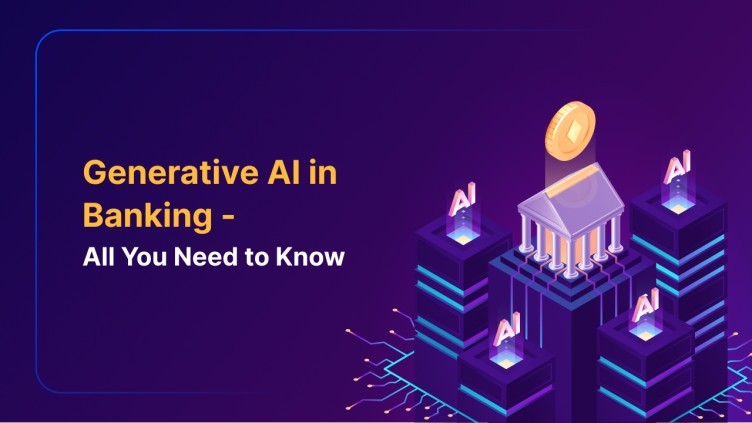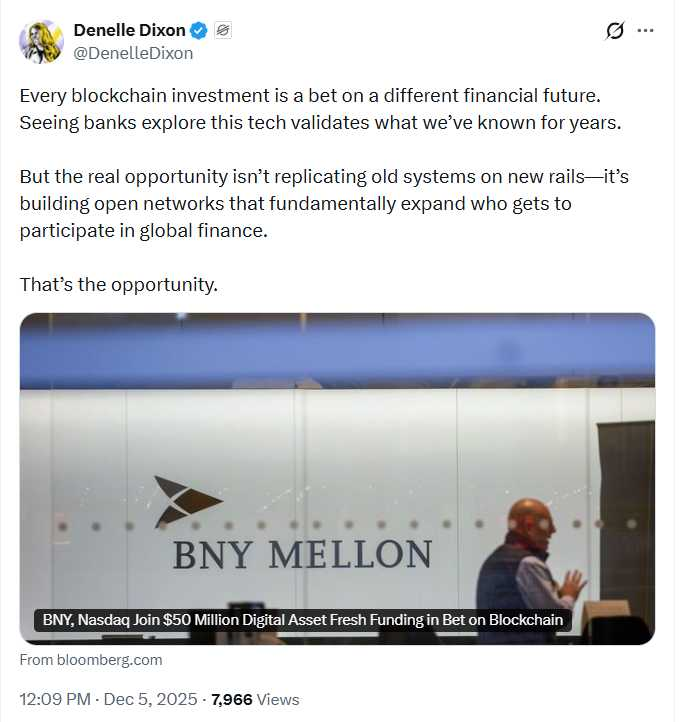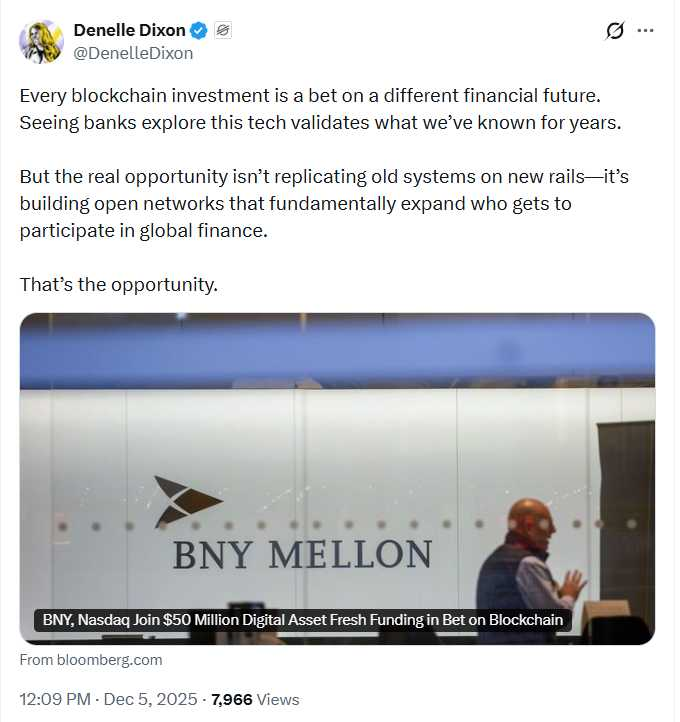Imagine a world where AI-powered systems can quickly identify fraudulent activities by analyzing intricate patterns in transactions, thereby safeguarding the interests of both financial institutions and their customers. Picture virtual assistants capable of understanding natural language and providing personalized financial advice based on individual preferences and goals. These are just a glimpse of the exciting possibilities that generative AI brings to the table.
In the ever-evolving landscape of banking, the integration of cutting-edge technologies has become a necessity to stay competitive and meet the growing demands of customers. One such revolutionary technology that has gained significant traction in recent years is Generative Artificial Intelligence (AI). From streamlining operations to enhancing customer experiences, generative AI holds tremendous potential to reshape the banking sector as we know it.
In this comprehensive guide, we'll take you on an illuminating journey through the world of generative AI in banking. Whether you're a curious beginner seeking an introduction to this transformative technology or a seasoned professional looking for in-depth technical analysis, this article has you covered.
Exploring Generative AI
Definition and Principles of Generative AI
Generative AI, also known as generative adversarial networks (GANs), is a subfield of artificial intelligence that focuses on creating new and original content by learning patterns and generating output that closely resembles real data. Unlike other AI techniques that rely on pre-existing datasets and patterns, generative AI has the remarkable ability to generate novel content, such as images, music, text, and even human-like conversations.
At its core, generative AI operates on a fascinating principle: a generator model is trained to create content, while a discriminator model evaluates the generated content against real examples. Through an iterative process, these models engage in competition, constantly improving and refining the generated output. This interplay of generator and discriminator forms the foundation of generative AI, enabling it to produce astonishingly realistic and creative content.
The generator aims to create realistic output, while the discriminator evaluates the generated output against real examples. Through an iterative process, these models engage in a dynamic dance, continually improving their performance.
The generator receives random input and transforms it into an output that mimics the characteristics of the training data. The discriminator, on the other hand, distinguishes between real and generated output. As the models compete, the generator strives to create content that becomes indistinguishable from real data while the discriminator becomes increasingly adept at making accurate judgments. This adversarial training loop drives the generative AI system to produce increasingly authentic and high-quality output.
How does it differ from other AI techniques?
Creativity and Novelty
Unlike traditional AI techniques, which rely on predefined rules and patterns, generative AI excels at creating original and innovative content. By learning patterns from training data, the generator can generate output that goes beyond existing examples, surprising users with its creativity and novelty. This unique capability makes generative AI an ideal tool for tasks like art generation, music composition, and storytelling.
Uncertainty and Exploration
Generative AI embraces uncertainty and encourages exploration. By introducing randomness into the model's input, it can generate diverse variations of content, allowing for experimentation and exploration of alternative possibilities. This ability to venture into uncharted territories distinguishes generative AI from rule-based approaches that produce predictable and deterministic output.
Transfer Learning and Adaptability
Generative AI models trained on large datasets can acquire a deep understanding of underlying patterns and structures. This knowledge can be transferred to new tasks or domains, enabling the model to generate content in unfamiliar contexts. The adaptability of generative AI sets it apart from other AI techniques that require extensive retraining for each new application.
Generative Latent Spaces
Generative AI models operate in a high-dimensional latent space, where each point represents a potential output. By exploring this latent space, users can manipulate various attributes of the generated content, such as style, color, or emotion. This interactive and controllable aspect of generative AI offers immense creative possibilities and empowers users to shape the output according to their preferences.
Applications of Generative AI in Banking
Enhancing Customer Experience
Personalized Recommendations and Offers: Generative AI empowers banks to deliver personalized recommendations and offers tailored to individual customers' needs. By analyzing historical data, customer behavior, and preferences, banks can leverage Generative AI algorithms to suggest relevant financial products and services. This enhances customer engagement, fosters loyalty, and drives revenue growth.
Virtual Assistants and Chatbots: Virtual assistants powered by Generative AI have become invaluable tools in the banking industry. These intelligent agents interact with customers in real-time, providing assistance, answering queries, and guiding them through various banking processes. By leveraging natural language processing and machine learning algorithms, virtual assistants ensure prompt and personalized customer support, available 24/7.
Risk Assessment and Fraud Detection
Anomaly Detection and Pattern Recognition: Generative AI plays a crucial role in identifying anomalies and patterns in financial transactions. By analyzing historical transactional data and learning patterns of legitimate and fraudulent activities, banks can employ Generative AI algorithms to detect unusual behavior, identify potential risks, and mitigate fraud. This proactive approach enhances security, protects customers' assets, and reduces financial losses.
Real-Time Transaction Monitoring: Generative AI enables real-time monitoring of transactions, providing banks with the ability to detect and prevent fraudulent activities as they occur. Through advanced data analytics, machine learning models, and anomaly detection techniques, banks can swiftly identify suspicious transactions, trigger alerts, and take immediate action. Real-time transaction monitoring enhances fraud prevention capabilities and safeguards the integrity of the banking system.
Automating Back-Office Operations
Document Processing and Verification: Generative AI streamlines back-office operations by automating document processing and verification. By leveraging optical character recognition (OCR) and natural language understanding (NLU) capabilities, banks can automate data extraction, validate document authenticity, and accelerate processes such as loan approvals, account openings, and compliance checks. This reduces manual errors, enhances efficiency, and improves overall operational productivity.
Data Entry and Reconciliation: Generative AI simplifies data entry and reconciliation tasks, which are traditionally time-consuming and prone to human error. By automatically extracting relevant information from various sources, matching and reconciling data sets, and identifying discrepancies, banks can streamline their back-office operations. This automation minimizes manual efforts, ensures data accuracy, and optimizes resource allocation.
Improving Decision-Making with Generative AI
Predictive Analytics for Investment Strategies
Predictive analytics has long been a staple in investment strategies, aiming to forecast market trends and identify optimal opportunities. However, the integration of Generative AI brings a new dimension to this field, enabling unparalleled accuracy and insights.
Portfolio Optimization: Generative AI algorithms, fueled by vast historical and real-time data, transform portfolio optimization. Leveraging advanced machine learning techniques, these algorithms detect intricate patterns, correlations, and nonlinear relationships that evade human observation. By combining diverse asset classes, risk profiles, and market dynamics, Generative AI empowers investment professionals to construct optimized portfolios that strike a delicate balance between risk and reward.
Market Trend Analysis: Generative AI has become a game-changer for market trend analysis. By leveraging deep learning models and neural networks, this technology unravels hidden patterns and uncovers meaningful insights within extensive datasets. It effectively synthesizes structured and unstructured data, such as market news, social media sentiments, and economic indicators, to predict market movements with unprecedented accuracy. Armed with these insights, investors can make informed decisions, outmaneuver competitors, and capitalize on emerging opportunities.
Credit Scoring and Loan Approvals
The lending industry is ripe for transformation through the application of Generative AI. By leveraging advanced algorithms, this technology enhances the precision and efficiency of credit scoring and loan approval processes.
Assessing Creditworthiness: Generative AI's intricate algorithms delve deep into the realm of creditworthiness assessment. By incorporating a multitude of factors, such as credit history, income stability, debt-to-income ratio, and behavioral data, these models provide lenders with comprehensive and granular insights. Advanced machine learning techniques, including ensemble methods and deep neural networks, enable the accurate evaluation of an applicant's creditworthiness. The result is fairer lending decisions and minimized risk exposure for financial institutions.
Streamlining Loan Application Processes: Generative AI streamlines and accelerates the loan application process, benefiting both borrowers and lenders. Through natural language processing (NLP) and optical character recognition (OCR), the technology automates the extraction and analysis of essential documentation, such as financial statements, tax returns, and identification records. By digitizing and interpreting this information, Generative AI significantly reduces the manual effort required, expedites decision-making, and enhances overall process efficiency. This streamlined approach ensures faster loan approvals, granting borrowers prompt access to much-needed funds.
Ethical Considerations in Generative AI Banking
Ensuring transparency and fairness
Transparency and fairness are paramount in generative AI banking systems. Customers should have a clear understanding of how their data is being collected, used, and processed. To achieve this, banks must adopt strategies that prioritize transparency:
Model Explainability: Employing interpretable generative AI models, such as explainable neural networks or decision trees, enables banks to provide clear explanations of the underlying decision-making processes. This transparency helps customers understand how their data influences outcomes, fostering trust and accountability.
Algorithmic Auditing: Regular audits of AI algorithms are essential to identify biases or unfair practices. This involves scrutinizing training data for potential biases, testing for discriminatory outcomes, and addressing any discrepancies promptly. Techniques like adversarial testing or counterfactual fairness can aid in uncovering hidden biases.
Fairness Metrics and Monitoring: Implementing fairness metrics during model development and deployment allows banks to measure and monitor the impact of AI systems on different demographic groups. Techniques such as disparate impact analysis or equalized odds can help detect and rectify biases to ensure fair treatment for all customers.
Guarding against bias and discrimination
Bias and discrimination have the potential to undermine the ethical foundations of generative AI banking. Here are some approaches to mitigate bias and ensure fairness:
Diverse and Representative Training Data: To minimize biased outcomes, banks must ensure training data is diverse and representative of the customer base. Incorporating data from different demographics and continuously updating datasets helps reduce the risk of discriminatory practices.
Pre-processing Techniques: Techniques like data augmentation, oversampling, or undersampling can help balance imbalances in training data and mitigate the amplification of biased patterns during model training. Advanced techniques like adversarial training or causal inference can also address complex forms of bias.
Regular Bias Assessments: Continuous monitoring and auditing of AI systems are crucial to identify and rectify biases that may emerge during deployment. Regular assessments using fairness evaluation tools, coupled with human-in-the-loop validation, can contribute to ongoing fairness and accuracy.
Privacy and data protection concerns
Protecting customer privacy and ensuring data security are critical aspects of generative AI banking. The following measures can safeguard privacy and address data protection concerns:
Differential Privacy: By integrating differential privacy techniques, such as noise injection or secure multi-party computation, banks can protect sensitive customer information while maintaining the utility of the data for AI model training.
Federated Learning: Adopting federated learning frameworks allows banks to train AI models on decentralized customer data without compromising data privacy. This technique enables model updates to be performed locally on user devices while preserving the privacy of individual data.
Privacy-Preserving Data Sharing: Employing privacy-preserving techniques like homomorphic encryption or secure multi-party computation allows collaboration between banks and regulatory authorities while safeguarding customer data privacy. This facilitates compliance with regulatory requirements and enhances customer trust.
Challenges and Limitations of Generative AI in Banking
Overcoming implementation barriers
Implementing generative AI in banking requires careful planning and consideration. Several barriers need to be addressed to ensure successful adoption and integration. Here are some noteworthy challenges:
Infrastructure and Resource Requirements: Successful deployment of generative AI necessitates robust computational infrastructure. Banks must invest in high-performance computing systems with adequate storage capabilities to support the training and inference processes of AI models. Additionally, allocating sufficient processing power, such as Graphics Processing Units (GPUs) or specialized AI accelerators, is essential for achieving optimal performance.
Scalability and Efficiency: Generative AI models, such as Generative Adversarial Networks (GANs) and Variational Autoencoders (VAEs), are computationally intensive and resource-demanding. Banks must design scalable architectures and optimize algorithms to handle large-scale datasets and complex computations. Techniques like model parallelism, distributed training, and model compression can help improve efficiency and reduce computational overhead.
Ethical and Legal Considerations: The technical implementation of generative AI must address ethical and legal concerns. Ensuring fairness, transparency, and accountability in AI systems requires techniques such as explainable AI and algorithmic auditing. Banks need to develop guidelines and frameworks that govern AI operations, promote the ethical use of data, and address potential biases or unintended consequences.
Dealing with data quality and availability
The effectiveness of generative AI models heavily relies on the quality and availability of data. In the banking sector, the following challenges are encountered:
Data Privacy and Security: Banks deal with vast amounts of sensitive customer data, necessitating robust data privacy and security measures. Applying techniques like differential privacy, secure multi-party computation, and federated learning can help protect customer data during model training and inference. Encryption and anonymization techniques should be employed to minimize the risk of data breaches and ensure compliance with privacy regulations.
Data Bias and Imbalance: Addressing data biases and imbalances is crucial to prevent biased outcomes generated by AI models. Technical approaches such as data augmentation, oversampling, and undersampling can help mitigate bias in training datasets. Implementing bias detection and mitigation algorithms, including fairness metrics and adversarial training, can further enhance the fairness of generative AI models.
Data Integration and Accessibility: Banks often face challenges when integrating and consolidating data from heterogeneous sources. Technical solutions, such as data normalization, data cleansing, and data standardization, are necessary to ensure seamless integration of data from multiple systems. Establishing robust data governance frameworks, data pipelines, and data quality monitoring systems can enhance data accessibility and integrity.
Regulatory and compliance issues
The banking industry operates under strict regulatory frameworks to maintain stability, protect consumers, and prevent financial crimes. Integrating generative AI into this environment presents specific challenges:
Explainability and Interpretability: Regulatory agencies demand transparency and interpretability in AI systems. Techniques such as attention mechanisms, feature importance analysis, and rule-based explanations can provide insights into AI model decisions. Banks should explore interpretable AI models, such as rule-based systems or decision trees, to enhance explainability and meet regulatory requirements.
Anti-Money Laundering (AML) and Fraud Detection: Generative AI can contribute significantly to AML and fraud detection in banking. Technical advancements, such as anomaly detection algorithms, deep learning architectures, and graph-based analysis, can improve the accuracy and efficiency of AI-powered fraud detection systems. Continuous model monitoring and updates, coupled with collaboration between banks and regulatory bodies, are crucial to stay ahead of emerging threats.
Data Retention and Right to Erasure: Compliance with data retention policies while respecting customers' rights to data erasure poses technical challenges. Banks must develop mechanisms to manage data retention and erasure in generative AI systems effectively. Techniques like federated learning, decentralized storage, and secure data deletion protocols can help strike a balance between regulatory compliance and individual data rights.
Case Studies: Successful Implementations
Empowering Banks with Azure OpenAI Service:
To swiftly leverage the power of intelligence and drive operational efficiencies, banks are embracing the Azure OpenAI Service. This cutting-edge platform seamlessly integrates advanced models from OpenAI with the enterprise-grade capabilities of Microsoft Azure, providing banks with an accelerated path to deploying generative AI solutions.
The key advantage of this integration is that all data, including training data and content, remains securely within the confines of the banks' own Azure tenants. Furthermore, by building on the Microsoft Cloud platform, banks gain access to robust enterprise-grade security features and role-based access controls. The recent introduction of GPT-4, OpenAI's most advanced Large Language Model (LLM) to date, elevates the precision and insight-generation potential for banks.
Transforming Banking Operations:
Writing Assistance and Content Generation: Generative AI serves as a game-changer in content generation and writing tasks within banks. Leveraging large pre-trained models, banks can now produce highly polished reports, summaries, and marketing materials with exceptional efficiency and accuracy. By automating content creation, generative AI empowers banks to streamline their operations while maintaining the human touch required for quality assurance.
Reasoning over Structured and Unstructured Data: Generative AI empowers banks to unlock valuable insights by conducting comprehensive reasoning over both structured and unstructured data. This capability facilitates informed decision-making, the identification of intricate patterns, and the discovery of hidden opportunities within vast and diverse data sources.
Summarization of Reports and Text: The extraction of pertinent information from extensive reports can be an arduous task. Generative AI simplifies this process by automatically summarizing reports, extracting key insights, and condensing substantial volumes of information into concise and digestible summaries. This invaluable feature saves time, enhances the responsiveness of advisors, and improves overall productivity.
Empowering Contact Center Agents
Contact centers act as crucial touchpoints for delivering exceptional customer experiences. Generative AI has revolutionized this domain, equipping contact center agents with invaluable tools to elevate customer interactions.
Generative AI empowers contact center agents to:
Summarize Conversations: Generative AI enables agents to swiftly summarize customer conversations, providing real-time insights and sentiment analysis throughout the entire interaction. This comprehensive understanding empowers agents to deliver personalized support and effectively address customer needs.
Real-time Coaching: Leveraging generative AI, supervisors can offer real-time coaching to contact center staff, enhancing agent performance during customer interactions. This dynamic guidance ensures consistent service quality and fosters continuous improvement.
Knowledge Base Enhancement: Generative AI enriches contact center knowledge bases by automatically extracting actionable insights from customer interactions. This iterative process facilitates faster response times, boosts customer satisfaction, and maximizes engagement levels.
Empowering Advisors: Enhanced Knowledge Search
For advisors in the banking industry, swiftly locating specific information within extensive documentation poses a significant challenge. Generative AI serves as a potent ally, offering enhanced knowledge search capabilities that expedite information retrieval.
Generative AI assists advisors through:
Powerful Summarization: Leveraging its contextualization and summarization capabilities, generative AI enables advisors to extract vital information from complex financial product documentation swiftly. This expedites responses to client inquiries, elevates decision-making, and fosters comprehensive client engagement.
Comparison Tables: Generative AI leverages its analytical prowess to generate visually compelling comparison tables summarizing key attributes of various financial products. This innovative visualization empowers advisors to effectively communicate complex information to clients, facilitating informed decision-making.
Content Generation: Accelerating Pitch Book Development
Pitch books serve as crucial components in investment banking, playing a pivotal role in proposing capital raises and mergers. Generative AI revolutionizes the development of pitch books, expediting the process while maintaining quality and accuracy.
Generative AI accelerates pitch book development by:
Automated Content Generation: Through generative AI, banks can automate the generation of pitch book content, collaborating with multiple sources such as client overviews, deal strategies, and marketing materials. Human oversight ensures the quality and precision of the generated content.
Iterative Improvement: Generative AI provides an iterative feedback loop, enabling continuous enhancement of pitch book content based on human oversight and feedback. This iterative process ensures that the generated content aligns with the desired standards of excellence.
The Future of Generative AI in Banking
Emerging Trends and Advancements
Advanced Fraud Detection and Prevention: Generative AI is at the forefront of combating fraud in the banking industry. Through deep learning algorithms, it can detect patterns, anomalies, and deviations within large datasets, providing real-time fraud alerts. Advanced generative models, such as Generative Adversarial Networks (GANs), analyze transactional data, customer behavior, and historical patterns to identify fraudulent activities with remarkable accuracy. By constantly learning from evolving threats, generative AI bolsters security measures, safeguarding both financial institutions and their customers.
Hyper-personalized Customer Experiences: Banking institutions are leveraging generative AI to deliver hyper-personalized customer experiences. By analyzing extensive customer data, including transaction history, financial goals, and preferences, generative AI algorithms generate tailored recommendations, product offerings, and financial advice. This level of personalization enhances customer satisfaction, fosters customer loyalty, and strengthens the overall relationship between banks and their customers.
Intelligent Risk Assessment and Management: Generative AI empowers banks to make informed decisions by providing intelligent risk assessment and management capabilities. Through advanced machine learning techniques, generative AI algorithms analyze market trends, historical data, and customer profiles to accurately assess credit risks and determine optimal lending decisions. This level of precision enables banks to minimize potential losses, optimize loan approvals, and maintain a healthy financial portfolio.
Autonomous Process Automation: Generative AI is driving process automation in banking operations, streamlining repetitive tasks and improving operational efficiency. Natural Language Processing (NLP) models, combined with robotic process automation (RPA), enable banks to automate customer support, document processing, and compliance tasks. By freeing up human resources from mundane activities, generative AI allows employees to focus on higher-value tasks, such as complex problem-solving and strategic decision-making.
Potential Impact on Job Roles and Workforce
Transformation of Traditional Banking Roles: Generative AI will reshape traditional banking roles, automating routine tasks and augmenting the capabilities of banking professionals. Data entry, document processing, and basic customer support will be automated, enabling employees to transition to more strategic roles that require human judgment, creativity, and critical thinking. This shift will increase the demand for professionals skilled in AI technologies, data analytics, and algorithm development.
Collaboration between Humans and AI: The integration of generative AI within banking operations emphasizes the collaboration between humans and AI systems. While AI automates repetitive tasks, human expertise remains invaluable in areas such as ethical decision-making, complex problem-solving, and establishing meaningful customer relationships. Banks will need to foster a culture that promotes collaboration between humans and AI, encouraging employees to work alongside AI systems to achieve optimal results.
Upskilling and Continuous Learning: The advent of generative AI necessitates continuous upskilling and learning for banking professionals. To thrive in this evolving landscape, employees must acquire expertise in AI technologies, data science, cybersecurity, and regulatory compliance. Financial institutions should invest in training programs and provide resources to support their workforce in acquiring the necessary skills and knowledge. This focus on upskilling will ensure a smooth transition to a future where generative AI plays a pivotal role in banking operations.
Conclusion
In conclusion, the emergence of generative AI in banking has ushered in a new era of technological innovation and transformation. This groundbreaking technology has the potential to revolutionize the way banks operate, enhance customer experiences, and drive unprecedented growth in the industry. From automating routine tasks to detecting fraudulent activities, generative AI is proving to be a game-changer.
By harnessing the power of generative AI, banks can now analyze vast amounts of data in real time, enabling them to make data-driven decisions with precision and agility. This technology empowers financial institutions to identify patterns, predict trends, and optimize operations, ultimately leading to improved efficiency, cost savings, and enhanced risk management.
As we look ahead, it is clear that generative AI will continue to reshape the banking landscape, enabling institutions to unlock new opportunities, streamline processes, and stay ahead of the competition. For both financial professionals and individuals, understanding the potential of generative AI and its implications will be essential to leverage its benefits fully.



























